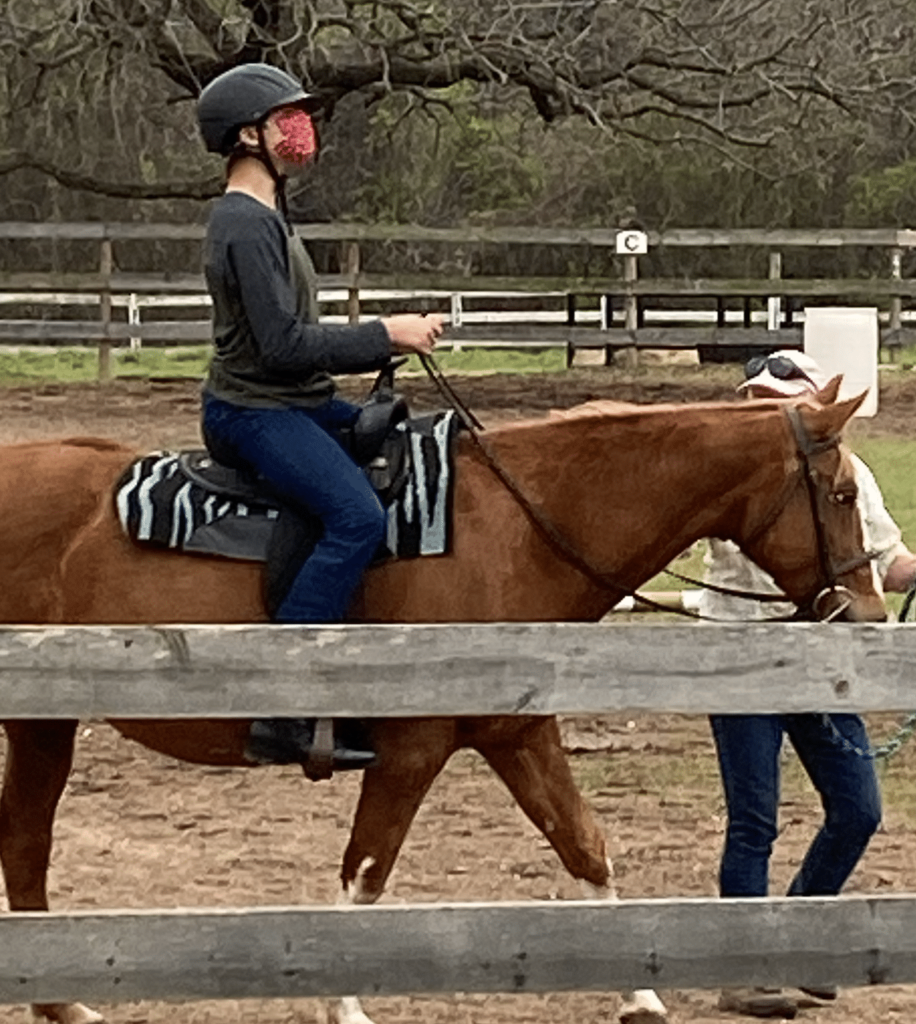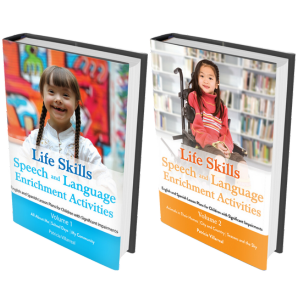I love the sentiments everyone shares during Autism Awareness month. As a speech-language pathologist, it highlights my love for our field. As a mother of a child with autism, it fills my heart.
This year my awareness of autism was greater than ever.
I had the opportunity to co-author a chapter on neurodevelopmental disorders with Dr. Celia Neavel, the Director of the Center for Adolescent Health at People’s Community Clinic in Austin, Texas. People’s Community Clinic is a member of the National Association of Free and Charitable Clinics. Their mission is:
“to improve the health of medically underserved and uninsured Central Texans by providing high quality, affordable health care with dignity and respect.”
At the same time, my husband and I have had the opportunity to parent our child with autism as he has entered adolescence. Our mission is:
“to provide meaningful and engaging activities that will help him grow and develop the skills he needs to live as independently and as happily as possible.”
I’m going to get personal in this post because it is important to me that those who serve children with autism understand how things change and intensify with age, the impact on families, and things that we, as speech-language pathologists and educators, can do to support our students and their families. I also want to acknowledge that my child prefers the term “child with autism” over “autistic child.” Many people prefer the term “autistic.” The best way to know which terminology to use is to ask people what they prefer.
Let’s start with Dr. Neavel. I first met Dr. Neavel serving on an advisory board for Easter Seals of Central Texas when I was pregnant with my first child, who is now 16. As I have collaborated with her over the years, one of the things that always struck me about Dr. Neavel was the depth of her relationships with the families of the children she serves. She KNEW these families. She knew their strengths. She knew their struggles. She connected them with services in the community. And, following the mission of People’s Community Clinic, she serves her families with the utmost dignity and respect.
Bilinguistics and People’s Community Clinic have collaborated for many, many years to provide meaningful services to support the communication skills of any child with autism and other neurodevelopmental disorders. Through our collaboration, Dr. Neavel reached out when she was asked to write a chapter on neurodiversity in a textbook for physicians. She didn’t realize at the time that I was parenting an adolescent with autism. It felt good to be able to share with physicians and future physicians the challenges parents face and some of the important things that physicians and other service providers need to consider in serving children with autism and other neurodevelopment disorders.
It Isn’t Easy Being a Parent of a Child with Autism
I’ll just say straight out that parenting a child with autism is not easy. Parenting is hard in general and intensifies with children with special needs. We grieve when we realize our children are on a different path. We grieve again many times, especially at the natural transitions. We grieve when our preschoolers go to Kindergarten. We grieve all over again when middle school starts and our kids aren’t on the sports teams or in the band. And we grieve when our children start high school and are not in classes with their typically developing peers, not on the path for driver’s education, and not on the track to college. We grieve. We grieve. We grieve.
We Learn from our Neurodiverse Children

At the same time we appreciate the beauty of the child with autism we are raising. They are different AND they are special. They help us see and appreciate different paths in life. I have recently been introduced to the amazing and incredibly therapeutic world of horses. And I thank my son for guiding me into that world. It is a place where I see him feel calm and at peace, and that is a beautiful thing. If only he could be in that place all of the time!
Behaviors and Needs Change over Time
It is common that, as children with autism reach adolescence, new challenges arise. They do not fully understand the changes in their body and do not understand what is socially acceptable versus inappropriate. They may not have the filter to control expressing inappropriate ideas. As a parent, this is painful. When your child’s school calls you to tell you that your son is saying inappropriate things to his teachers, you cringe. When you witness your child saying inappropriate things to his siblings, you cringe. You look for help.
And as you look for help, you realize the severe shortage of services that are available for children with autism and other neurodevelopmental disorders. This paucity of services is well documented (see additional readings below if you want to dive deeper). We need to understand the shortages and strive to meet them.
Adolescents with Neurodevelopmental Disorders and the Criminal Justice System
In my mind, there is a direct link between the paucity of services for children like mine and the fact that many of these children end up in the criminal justice system. Too often, AYA not getting the needed support end up in the criminal justice system, especially individuals of color (see additional readings below). And this is a big problem. It is costly for these individuals and it is costly for society. It leads people down a path that is hard to recover from.
Thus far, we have been able to avoid the criminal justice system but it is something we fear. We fear that our child will do something that results in someone calling in police who do not understand him. While he was young and small, those behaviors drew “looks” from the parents of children with typical development on the walk to school. They didn’t understand what we were dealing with. As our child gets older and stronger, we fear that the looks may become cuffs. And in saying that, I acknowledge that, as a middle class white family, we are afforded privileges that many kids who have disabilities like our son are not afforded. And that is not okay.
How do we address this? I don’t have all of the answers but I have ideas about where to start. We develop collaborations between our community clinics, schools, and law enforcement agencies to share our knowledge and to learn about their procedures, and to explore ways to change the pipeline to prison into the pipeline to needed supports and services.
The Shortage of Services for Adolescents and Young Adults with Neurodevelopmental Disorders
As our son’s needs have increased with adolescence, we have searched and searched for services to support him. We have searched for in-home services, residential services, residential schools. At one point, in a period of particular need, we reached out to 30 programs across the United States. All full. All with waiting lists. It’s been many months since we felt the need to start searching for these programs and we still have not found any availability for our child.
In the meantime, we did finally (after 21 months and many appeals) get our insurance company to approve Applied Behavior Analysis (ABA) services. It’s helping but it certainly would have helped to have gotten the approval when we first requested it.
If any of you are thinking about trying to fill a hole in the field—intensive and residential programs for high needs adolescents is a critical need.
Community Connections
We have connected with other families with similar situations. Two of those families have started a collaboration with Easter Seals and our city government to build a community for neurodiverse adults so we jumped into those conversations. It won’t happen overnight but with enough momentum and motivated people, change can happen and great programs for people with neurodevelopmental disorders like autism can be created.
Know Your Community
For those of us working in the field with, we can help by getting to know all of the non-profits and local organizations in our cities and towns and know what they do, who they serve, and how families can get connected with them. We can try to start programs in areas where we see shortages. We certainly have our work cut out for us.
To all of you who work with a child with autism, adolescents, young adults and adults with autism and other neurodevelopmental disorders, thank you, from the bottom of my heart! You make a difference in the lives of the children you serve and the lives of their families.
Additional Readings
Autism Speech Implications and Resources
Cheely CA, Carpenter LA, Letourneau EJ, et al. The prevalence of youth with autism spectrum disorders in the criminal justice system. J autism and dev disorders. 2012 Sep 1;42(9):1856-62. Accardo AL, Kuder SJ, Woodruff J. Accommodations and support services preferred by college students with autism spectrum disorder. Autism. 2019 Apr;23(3):574-83.
Hyman, S. L., Levy, S. E., & Myers, S. M. (2020). Identification, evaluation, and management of children with autism spectrum disorder. Pediatrics, 145(1).





Thank you, Ellen, for being so open about your personal experience. It is so helpful for those of us who work with families and try to do our best but haven’t walked in your shoes. I know that those of us who work in the schools try to do as much as we can but school services just simply aren’t enough to meet the needs of these kiddos. I do appreciate all that you’re doing for all families in similar situations and for us in the profession. You’re an amazing person. My best to your family.
Thank you so much, Gina. I truly appreciate your words.